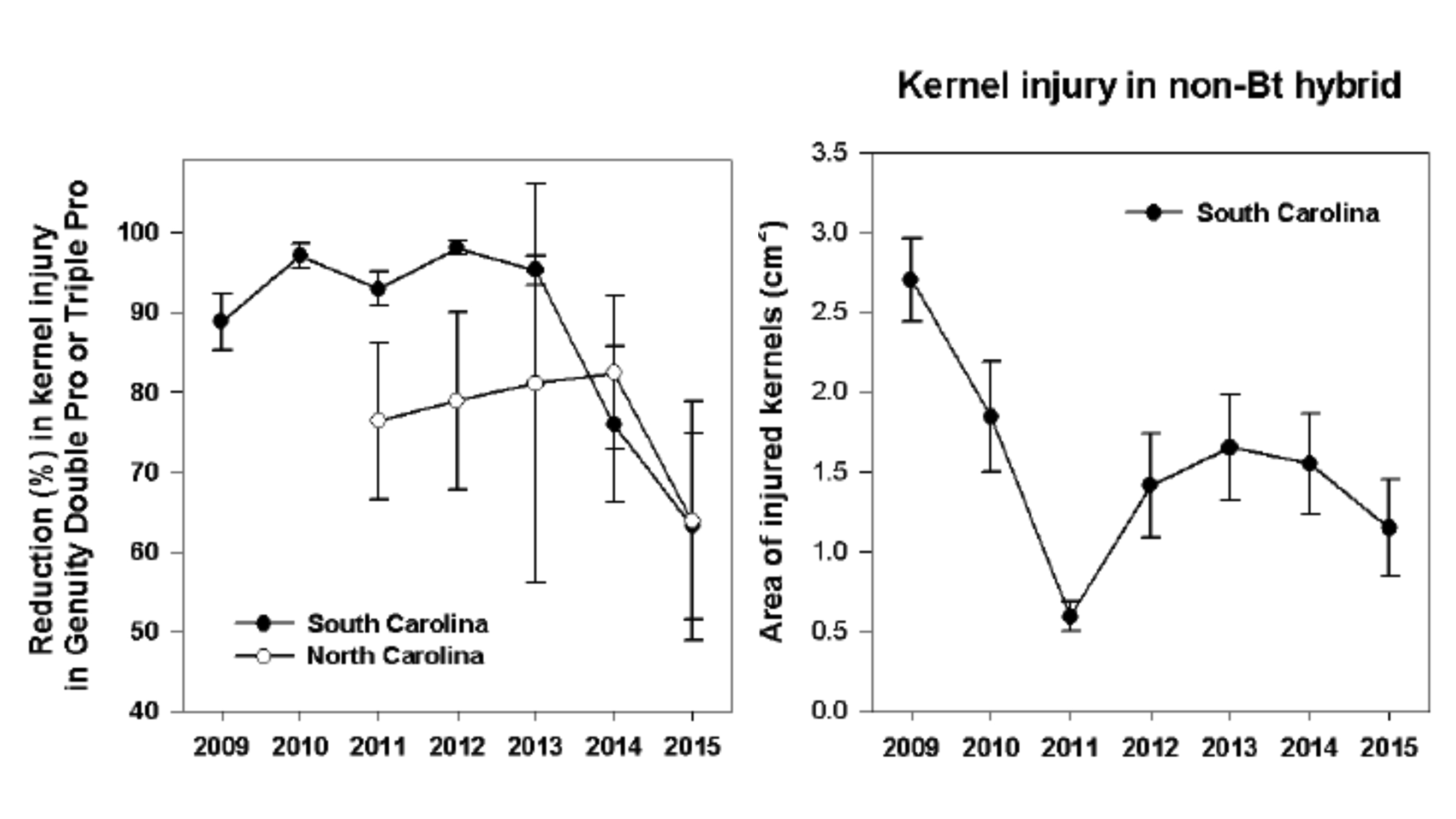Earworms/Bollworms in Bt Corn
go.ncsu.edu/readext?418479
en Español / em Português
El inglés es el idioma de control de esta página. En la medida en que haya algún conflicto entre la traducción al inglés y la traducción, el inglés prevalece.
Al hacer clic en el enlace de traducción se activa un servicio de traducción gratuito para convertir la página al español. Al igual que con cualquier traducción por Internet, la conversión no es sensible al contexto y puede que no traduzca el texto en su significado original. NC State Extension no garantiza la exactitud del texto traducido. Por favor, tenga en cuenta que algunas aplicaciones y/o servicios pueden no funcionar como se espera cuando se traducen.
Português
Inglês é o idioma de controle desta página. Na medida que haja algum conflito entre o texto original em Inglês e a tradução, o Inglês prevalece.
Ao clicar no link de tradução, um serviço gratuito de tradução será ativado para converter a página para o Português. Como em qualquer tradução pela internet, a conversão não é sensivel ao contexto e pode não ocorrer a tradução para o significado orginal. O serviço de Extensão da Carolina do Norte (NC State Extension) não garante a exatidão do texto traduzido. Por favor, observe que algumas funções ou serviços podem não funcionar como esperado após a tradução.
English
English is the controlling language of this page. To the extent there is any conflict between the English text and the translation, English controls.
Clicking on the translation link activates a free translation service to convert the page to Spanish. As with any Internet translation, the conversion is not context-sensitive and may not translate the text to its original meaning. NC State Extension does not guarantee the accuracy of the translated text. Please note that some applications and/or services may not function as expected when translated.
Collapse ▲Earworms (known as bollworm in cotton) have been fairly absent in our system over the past few years. Arguably, at least a small part of this has to be due to widespread plantings of corn hybrids with the VT Double PRO traits and adoption of the newer Agrisure Viptera and Intrasect Leptera traits. Over the past couple years, there have been spots in our state where failures have been reported from VT Double PRO. In research plots in the Carolinas, we have been tracking the efficacy of this trait and have noted a decrease over time (see figure). That has led to earworms breaking through a lot of our VT Double PRO corn this year across the state.

Percent reduction in corn earworm feeding on VT Double PRO hybrids (efficacy) compared to non-Bt hybrids over time and area of kernels injured by corn earworms over time (pressure) in South Carolina. Graphic from Francis Reay-Jones, Clemson U.
The good news is that corn earworm has been demonstrated time and time again through replicated and published university Extension research to not impact yield in timely planted corn. These results are consistent across the southern US and have been proven recently in the Carolinas. The bad news is that we have also demonstrated that earworms that develop on Bt corn survive as well as those from non-Bt corn (once they pupate). Also, once they mate and lay eggs as adults, they will lay as many viable eggs as those coming off non-Bt corn. Furthermore, earworms that develop and survive from Bt corn will survive better on Bt cotton than those that develop from non-Bt corn. This means that many of the earworms coming off corn now will present a problem for Bt cotton later in the season (see this article for new 2016 cotton recommendations)
Finally, earworm populations are heavier than they’ve been in years past, so we might expect more problems in both cotton and soybeans. The earworm populations seem to be developing off corn a week to 1 1/2 weeks earlier than normal. This, combined with our late cotton and soybean crop will probably contribute to some unique management challenges as the season progresses.


